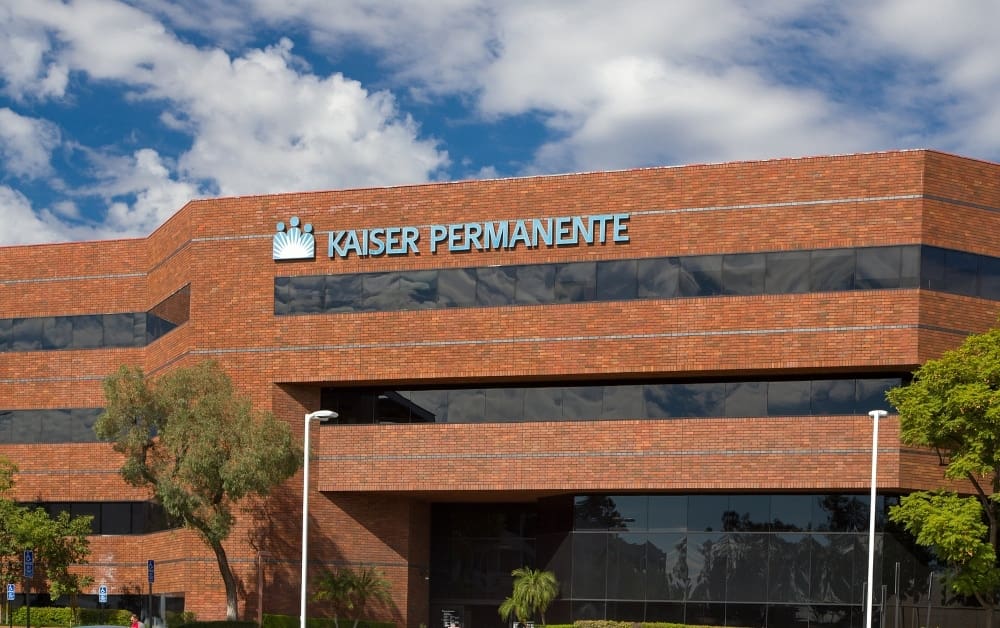
For new physicians with high student loan debt and a short period of employment income, qualifying for a new home loan might be tough. In some cases, though, a physician loan program, like Kaiser’s mortgage loan program for doctors, can help.
Physician mortgage loans generally have less stringent underwriting requirements and higher loan amounts that make it possible for a doctor to get a home loan as a first-time homebuyer. Here’s what you need to know.
What’s the Kaiser Permanente Home Loan Program?
The Kaiser Permanente loan program is designed to help new doctors who are employed with the company get home financing. It offers up to 10% in down payment assistance, up to a maximum amount of $150,000, with a purchase price of up to $1.5 million.
It’s important to note that this loan, depending on the lender, might be considered an FHA loan as well. Check with Kaiser Permanente to see if you qualify by living in northern California or another eligible location.
Unpacking the Kaiser doctor home loan program
To access the program, you must be a qualified employee of the Permanente Medical Group (TPMG). The program can help you purchase a home in Northern California by using a down payment of up to $150,000. It also includes the potential for up to $1,000 in closing cost credit and access to programs that include tax credits and grants.
This program is aimed at new physicians who haven’t previously owned real estate in Northern California. It’s not meant for nurses or TPMG employees who aren’t physicians.
Another bonus of the program is the potential for interest forgiveness (Kaiser Permanente also has a student loan forgiveness program). If you’re in good standing, at the end of the sixth year, you can receive some loan forgiveness every two years until the loan’s maturity.
While it can be a helpful program for someone hoping to buy a home as quickly as possible, there are some details to be aware of before moving forward.
Kaiser Permanente's unique position as part-owner
One of the most important things to understand with this program as a health care worker is that Kaiser Permanente is a part-owner of your home. They help you with the home buying process, but part of the price you pay is giving up a portion of your home equity to the ownership of TPMG.
As a result, when you decide to sell the home, Kaiser Permanente gets a cut of the proceeds based on its position as a part-owner.
Understanding the rules and fine print
Before submitting a loan application and signing the paperwork, review the fine print to make sure you understand what you’re agreeing to.
A major caveat of Kaiser Permanente’s mortgage assistance program is that it becomes part-owner in your purchase agreement. It’s also important to note the other details of the loan:
- Home location must be in the Northern California service area for TPMG.
- You can extend the maturity date after remaining eligible for 10 years, but it requires paying a lump sum of at least 25% of the principal balance.
- Interest on the TPMG loan accrues during the first five years. However, for eligible physicians, interest can be forgiven in two-year increments starting at the end of the sixth year. All the interest can be forgiven by the time maturity is reached.
- Some of the terms are determined by the lender. When filling out a loan application, make sure you understand what’s being offered by the originator, and how to prepare.
Eligibility requirements
- Employment. You must be a new physician at TPMG (nurses and certain other health care workers aren’t eligible).
- Location. Work in Northern California in a qualified service area, which can include Oakland, San Francisco and other cities.
- Residence. The property must be used as a primary residence.
- Property type. It must be a single-unit property.
Check with Kaiser Permanente to determine other eligibility requirements, such as FICO score and debt-to-income ratio.
What to consider before choosing a mortgage program
When choosing a mortgage program, sometimes it’s less about convenience and more about your long-term plan.
Job security and career progression
First, consider your career progression. Many doctor mortgage loan programs are designed with the understanding that you’ll have your job for a long time. The Kaiser Permanente program can be enticing, but if you leave your job with TPMG, you’ll need to figure out how you’re going to repay the loan. You might need to refinance or take some other steps.
Before tying your mortgage to your employer, consider how long you plan on practicing under TPMG. You should also be reasonably sure that your job is secure; for example, you might take advantage of this program and then get laid off.
Personal financial situation
Don’t forget your personal finance situation. Review the options and figure out how much you can put toward a down payment. Think about how monthly payments on a mortgage might impact your finances.
Also, realize that there are doctor mortgage programs that might better suit your needs, including not coming with private mortgage insurance (PMI) and zero-down options. If you’re uncertain about your down payment, a doctor loan program might be an option to avoid giving away part of your home equity.
Long-term goals and home ownership plans
Finally, don’t lose sight of your long-term goals and homeownership plans. If you might sell the property soon, and will need to use the proceeds to buy a home, the program might not be a fit. Kaiser Permanente will take a cut of the proceeds as a part-owner.
Think about what you might end up sacrificing in this situation. You might not have as much to put toward your next home if you use this program.
Pros and cons of tying your mortgage to your employer
Pros
- Loan forgiveness on the interest
- Might be easier to fill out loan application documents with employment information
- Get help with closing costs
Cons
- Might need to repay some of the loan if you leave the job
- Getting a maturity extension requires paying a large lump sum
- Limited to Northern California
Alternatives mortgage options
If you decide the Kaiser Permanente program isn’t the right move for you, there are other options.
Doctor mortgage
A general physician mortgage program can be an alternative to put as little as 0% down and avoid PMI. Some doctor loan programs also have looser underwriting standards that don’t include student loan debt in debt-to-income calculations. This can make it easier to get a loan, and offer flexibility in putting together a home purchase package that works for you.
Conventional mortgage
Despite your student debt load, you might still be able to get a conventional mortgage. You can usually get one of these mortgages for as little as 3% down, and you might have a lower annual percentage rate.
However, a conventional mortgage comes with more stringent requirements, including income and credit criteria. If you have low amounts of debt and you can prove a track record of income, this might be the better choice.
Next steps to qualify for a physician mortgage
Run the numbers using a physician loan calculator. Once you have a sense of what type of loan and figures might work for you, compare a handful of doctor mortgage loan options.


